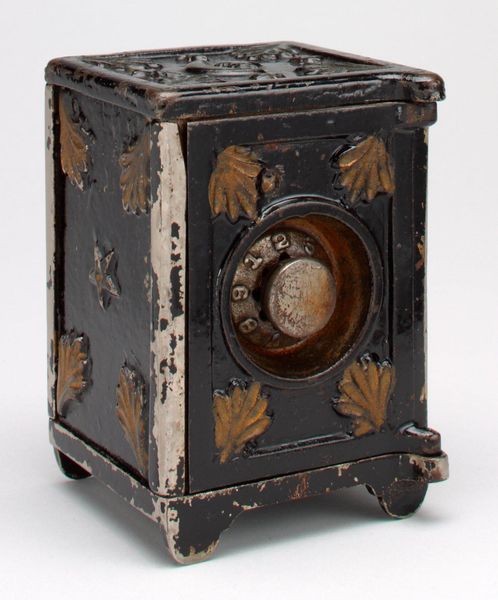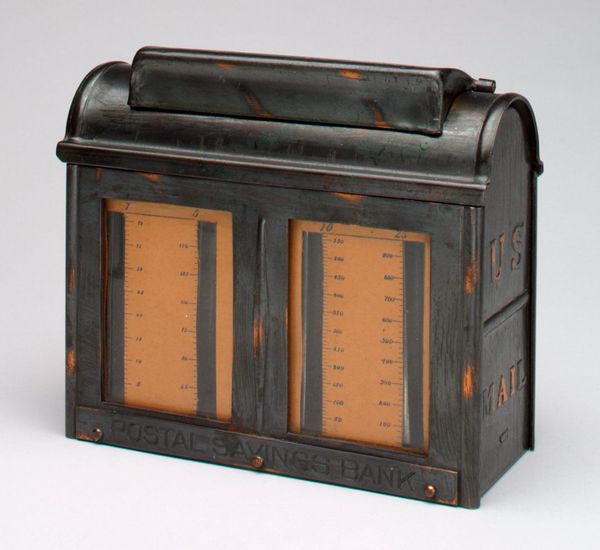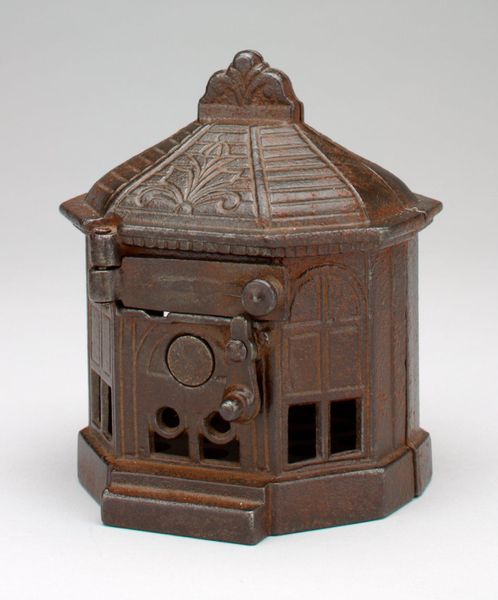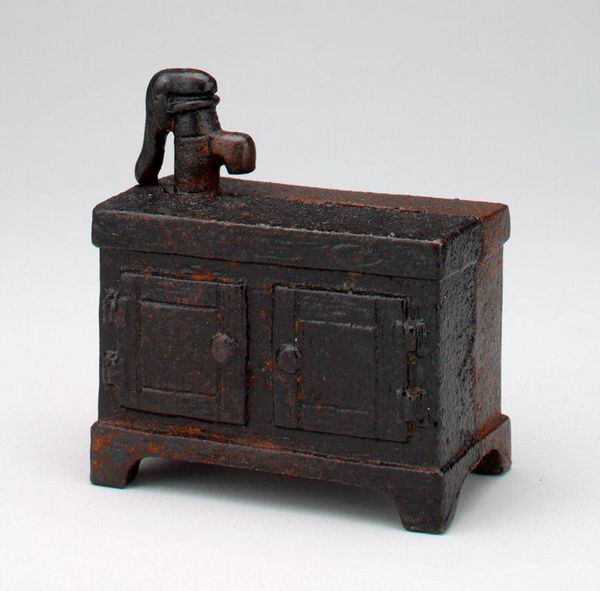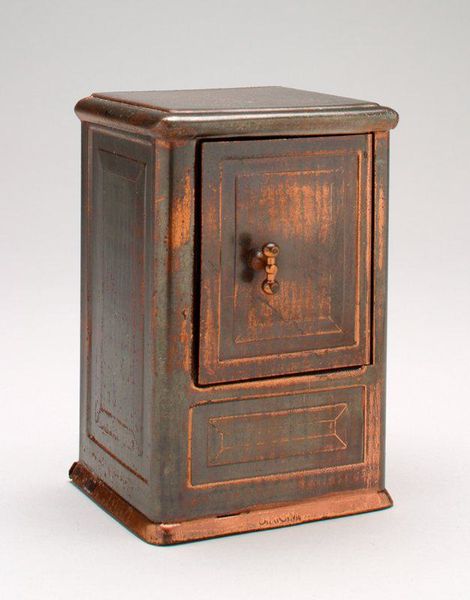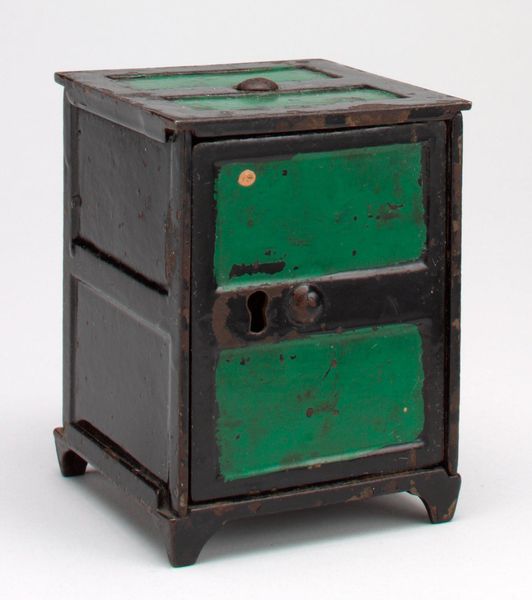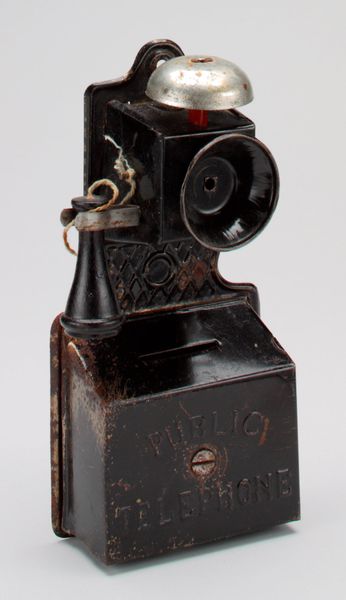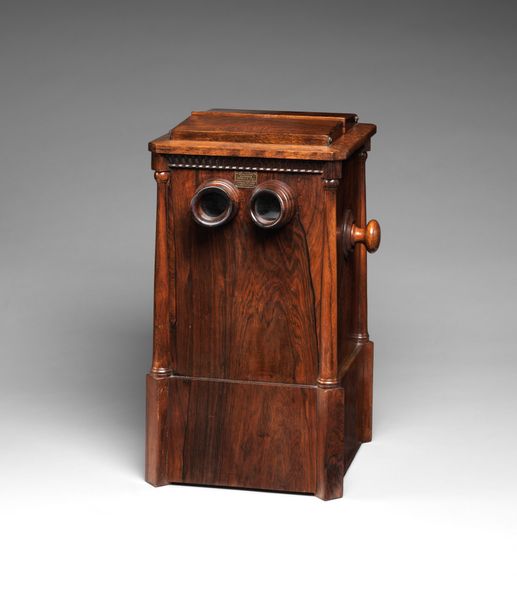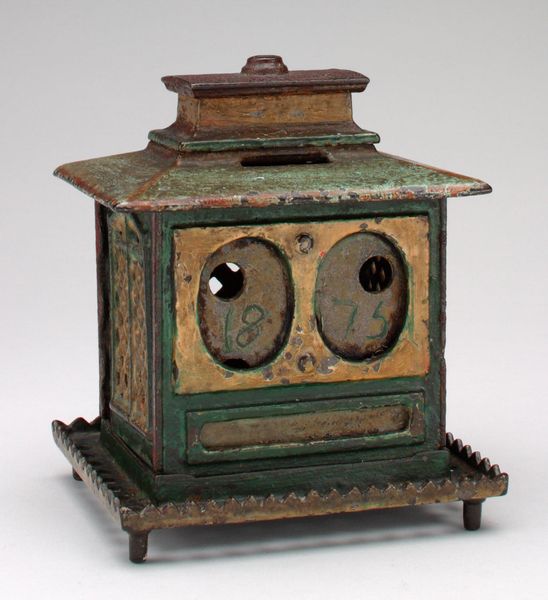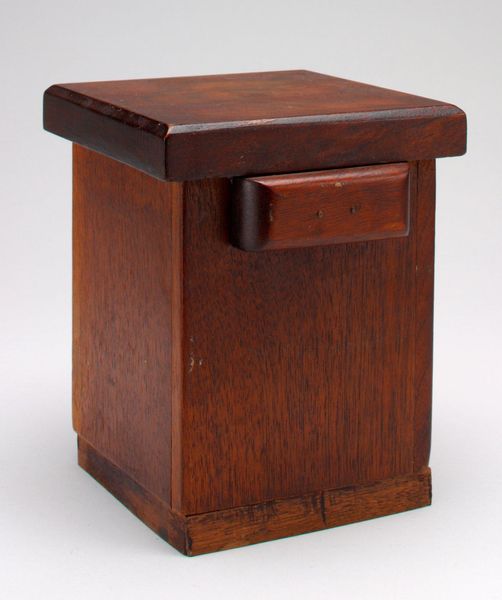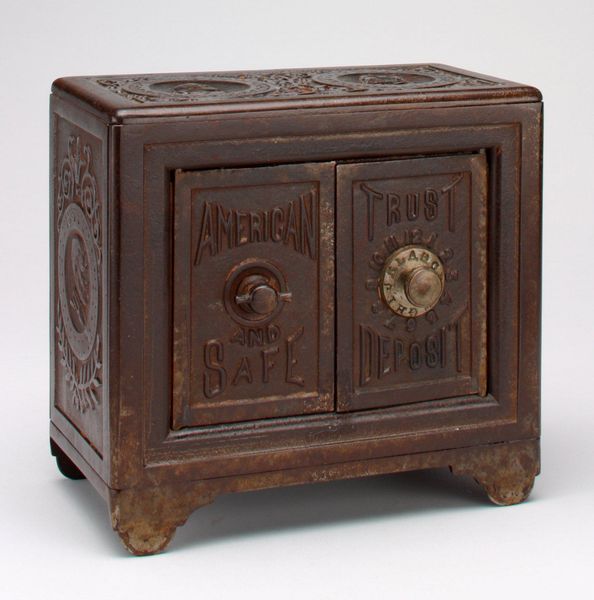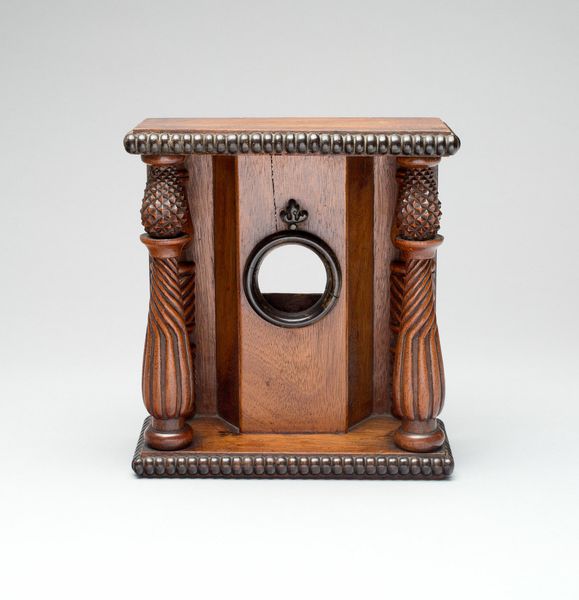
assemblage, metal, found-object, sculpture
#
assemblage
#
metal
#
sculpture
#
found-object
#
sculpture
#
decorative-art
Dimensions: 4 x 2 11/16 x 2 1/2 in. (10.16 x 6.83 x 6.35 cm)
Copyright: Public Domain
Curator: Here we have -Safe Bank- still bank, a metal sculpture likely from around 1920, here in the Minneapolis Institute of Art. Editor: It's got that lovely patina of age, doesn’t it? Almost looks like a miniature, forgotten fortress of financial dreams. The metal is worn, but there’s something charming about its solidity. Like it's seen generations of allowances and rainy-day funds pass through it. Curator: Absolutely. These “still banks” weren't just for saving money; they also instilled values of thrift in children. Mass production allowed families of more modest means to have this physical representation of upward mobility in the home. It's also important to remember the sociopolitical dimensions of that era - a new emerging middle class eager to put their stamp on the landscape. Editor: It makes you wonder, doesn’t it? About all the little hands that have turned that faux combination lock, imagining all the possibilities contained within. I bet none of them imagined ending up in a museum, as a symbolic artifact. Perhaps that’s the ultimate commentary on the supposed 'safety' it represents, with that ironic title. What we value changes, and what's 'safe' today may be antiquated tomorrow. Curator: And the decorative art quality should not be dismissed. The very design suggests notions of trust, security, institutional power. Editor: Exactly. It's a stage prop, a simulation, a lesson. I also can't help but think of those old cartoons where a character would guard their coin like it was made of gold. Pure slapstick...or not so pure if one thinks about childhood experiences regarding one's possessions. I wonder about that child's sense of safety… were they in a stable home, secure from social turbulence, or from domestic tensions? What did saving mean to them in real life, really? Curator: The object exists on multiple levels. One way it engages with modern museum audiences is precisely through this interweaving of personal memory and cultural reflection. Its material presence helps us access the aspirations of a specific generation. Editor: It certainly does! And for me, it sparks a contemplation of transience—of things kept safe until… who knows? Even metal fades, and even financial paradigms shift. Curator: A pertinent note to end on, I think. It does ask more than a few questions about security and social transformation. Editor: A fitting end indeed… perhaps something to ponder before heading to the gift shop to make any spur-of-the-moment purchases?
Comments
No comments
Be the first to comment and join the conversation on the ultimate creative platform.
